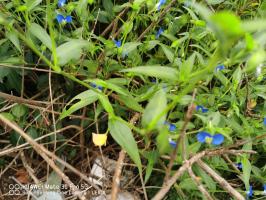Is a Mango Tree Considered a Flowering Plant?
When it comes to categorizing plants, one of the most basic distinctions is between flowering and non-flowering plants. This differentiation refers to whether a plant produces flowers, which are the reproductive structures that allow a plant to produce seeds and propagate. Many people assume that all trees that produce fruit are also flowering plants, but this isn't necessarily true. In this article, we'll explore whether a mango tree is considered a flowering plant, and why this distinction matters.
What is a Mango Tree?
Before we can answer the question of whether a mango tree is a flowering plant, we need to understand a bit more about what a mango tree actually is. The mango tree, or Mangifera indica, is a tropical tree species that is native to South Asia but grown in many other parts of the world as well. Mango trees are particularly prized for their fruit, which is a juicy, fragrant, and flavorful type of drupe.
Flowering Plants vs. Non-Flowering Plants
As mentioned earlier, the primary difference between flowering and non-flowering plants is whether they produce flowers. Flowers are the reproductive organs of a plant, and they contain both male and female reproductive structures that allow them to produce seeds. In flowering plants, flowers are used for reproduction and also typically have showy petals and colors to attract pollinators. Non-flowering plants, on the other hand, use other types of reproductive structures like cones or spores.
Is a Mango Tree a Flowering Plant?
So, is a mango tree a flowering plant? The short answer is yes. While they may not produce the showiest or most fragrant flowers, mango trees do indeed produce flowers, and those flowers are necessary for the tree to produce fruit. Mango flowers are small and greenish-yellow, and they typically grow at the tips of branches in clusters called panicles. The flowers are pollinated by bees or other insects, allowing them to develop into the fruit we know and love.
Why Does it Matter?
You might be wondering why it matters whether or not a mango tree is considered a flowering plant. After all, it doesn't change the fact that the tree produces delicious fruit. However, understanding the classification of plants can actually be important for a number of reasons. For one thing, it can help us better understand the biology and ecology of plant species, which can be crucial for conservation efforts or agriculture. Knowing whether a plant is a flowering or non-flowering species can also help us determine how it reproduces, which can have implications for things like seed production and genetic diversity.
Conclusion
So there you have it – a mango tree is indeed a flowering plant. While the flowers may not be as showy or fragrant as those of other plants, they play a vital role in allowing the tree to produce the delicious fruit we all know and love. Understanding the differences between flowering and non-flowering plants may seem like a small detail, but it can actually be important for understanding the biology and ecology of plant species, and ultimately for ensuring their continued existence in our world.

 how many times do yo...
how many times do yo... how many planted tre...
how many planted tre... how many pine trees ...
how many pine trees ... how many pecan trees...
how many pecan trees... how many plants comp...
how many plants comp... how many plants can ...
how many plants can ... how many plants and ...
how many plants and ... how many pepper plan...
how many pepper plan...































